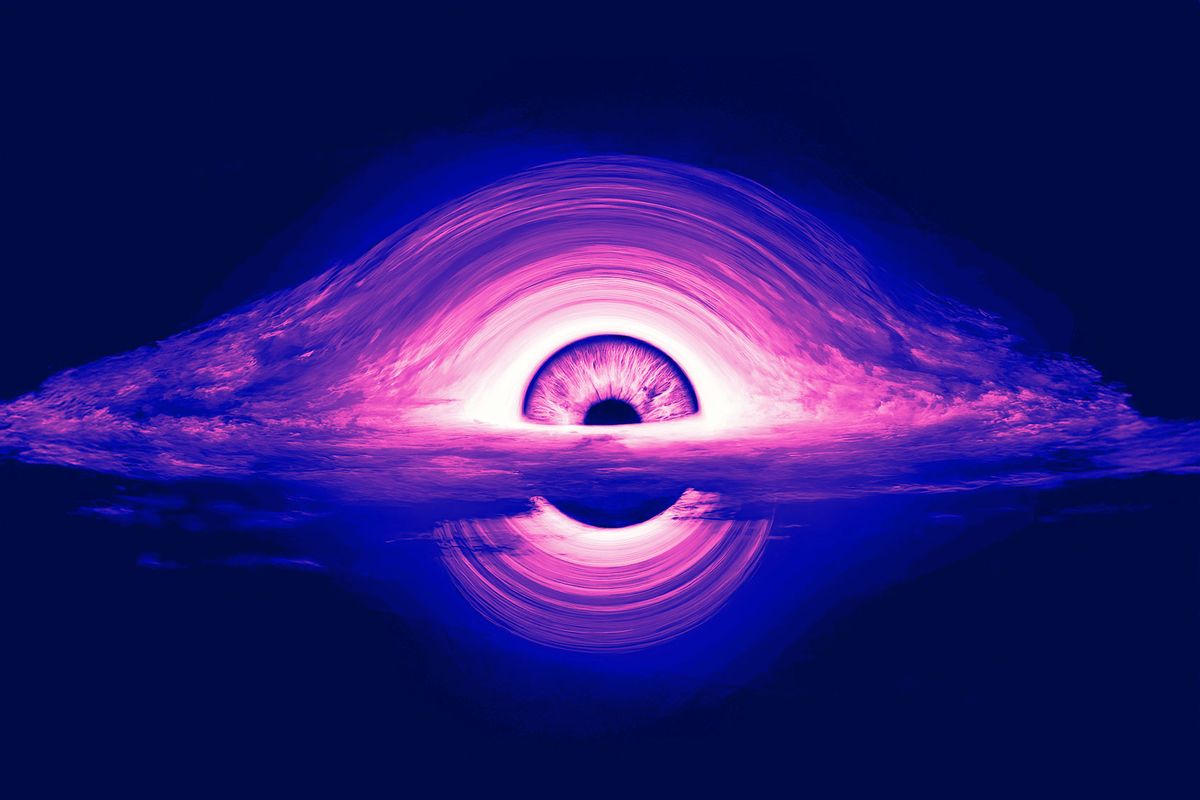by ELIZABETH HLAVINKA

The idea, proposed in the ’70s by the late John Wheeler, once seemed outlandish. But could he be right?
Over the past 50 years, astronomers have made dozens of major discoveries that help explain the nature and origins of the universe. They’ve measured the cosmic microwave background, or leftover radiation from the Big Bang, with extremely high precision to help paint a picture of the first nanoseconds of the universe. They realized that the way galaxies were moving was being influenced by something invisible called dark matter that makes up roughly a quarter of the universe. And they discovered a new “ghostly” particle that passes through matter without much of a trace called the neutrino.
Scientists have continued to chip away at some of the fundamental questions about how the universe and its multitudes of parts work together, but they haven’t really gotten close to answering the most basic and elusive question that has been pursued by philosophers and scientists alike since human consciousness came to be: Why us, why here, and why now?
Or, as the late physicist Dr. John Wheeler said in an interview with Discover Magazine in 2002: “How come existence?”
“I’d be willing to have this arm cut off if I could understand how come the quantum? If I could understand how existence comes about,” Wheeler once said in a past interview. “I think it’s a thing which is outside the bailiwick of lots of people, and yet I think it stands the most chance of giving a really dynamic impulse to the whole scientific enterprise.”
Wheeler was an ideological leader in developing quantum cosmology and is memorialized by his many contributions to the field, including coining the term black holes.
He was also known for his tendency to push the boundaries of what was possible in physics with creative ideas. “A lover of poetry and philosophy,” who “was acutely aware of the power of words to shape ideas,” wrote Richard Webb in a 2008 biographical piece published in Nature, Wheeler was “wont to write lectures on the blackboard simultaneously with both hands.”
One of his ideas, which he called the “participatory universe,” posits that our own observations could actually be what is creating our physical reality.
The idea could be depicted in a drawing of the letter “U,” where an observer stands on one column of the letter looking backward at the past history of the universe, said Dr. Bob Wald, a theoretical physicist at the University of Chicago who was Wheeler’s student at Princeton University between 1968 and 1972.
Salon for more
